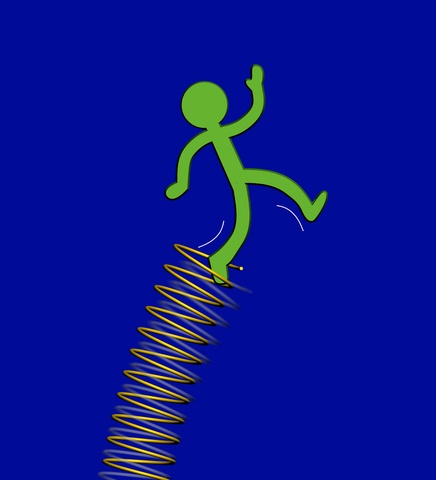Why Businesses are doing wellbeing 18th May

Wellbeing in the workplace is evolving. It is proving benefits to employees beyond what has been seen as their immediate physical health.
Yoga and mindfulness is changing employees lives for the better and through future studies could definitively be proven to raise creativity, reduce absenteeism and reduce stress. Here 6 areas where people are being benefits and why.
I survey nearly 50 employees, across 3 well known businesses, that I work with. I looked to see the effects that yoga and mindfulness is having on them, based on a regular class that they attended which were held within business hours or straight after work.
Here is the results from 6 key areas which people on the survey brought out as crucial:
- Reducing stress and Anxiety
- Promoting Better sleep
- Building resilience
- Raising Happiness levels
- Providing calm, clarity and focus
- Improving posture and back issues
and why I believe that people are benefiting from the courses or a one-off workshop.**[1]
1. Reducing Stress and Anxiety
Over 30% of people identified feeling stressed, tense or anxious before entering a yoga or mindfulness session. 100% of these reported feeling a changed in mood by the end of the session.

Yoga encourages you focus inwards on the body and mind. This focus on the breath and regulating the heart rate, shifts the nervous system into lowering cortisol levels* and slowing down the mental loops or mind monkeys associated with stress.
2. Promoting Better Sleep
65% reported better sleep after a mindfulness or yoga session, with the effects lasting longer, the longer or greater frequency of session they did.

Once the body have been given the opportunity to release built up tension and stress, coming out of fight or flight mode which has sent high levels of glucose* floating around the blood stream, the mind is more able to relax. The brain then sends positive endorphins around the body that allow for a calmer, deeper sleep. Allowing you to wake up more refreshed in the morning.
3. Building Resilience
69% of people who came for stress reduction techniques found that they were better able manage everyday tension and stress at work.

We so often are still during our working day. Placing our bodies in stress positions whilst we sat or hunched over a desk. Once the mind and body have relaxed, through focus on a single task like movement and mindfulness, the mind starts to let go of the mind loops and monkey chatter in your head. This allows ‘space’ in the mind to manage changes and challenges is our lives that would otherwise spiral and give that feeling of loss of control.
4. Raising Happiness levels
98% of those that attend a yoga or mindfulness session, left feeling good or happy afterwards.

In my experience, the conversations that often go on after a class are centred around the sense of bliss and release that people feel from the whole practice. Not only is this because the cortisol level in the body have been lowered, but because but medical trials have shown a raise in dopamine level, happy hormones, leave us with a sense of bliss….* Being able to focus the mind and practice this, will enable the mind to more often return to this feeling and raise peoples sense of happiness for themselves and the people around them.
5. Providing Calm, Clarity and Focus
30% reported that relaxation and mindfulness helped when they needed to focus complex tasks or decisions

The practice of mindfulness and some more meditative forms of yoga, encourage you to release tension and relax. This is done through focused breath work, which basically means focusing on the breath as it moves in and out of the body and the effect it has on the mind. It can also be introduced as ‘coming into the moment’ and ‘sitting with yourself’. This practise has been shown to lower the blood pressure and heart rate, regulating brain patterns which allows us to direct our energies to task–in-hand.
6. Improving posture and back issues
80% of people who came on the yoga course with back issues, after 4 weeks found they reduce or relieved pain

We are aware that with our modern lifestyle can result in high stress levels, little movement and bad posture. All these can lead to back and neck issues, as well as breathlessness. What yoga and moving mindfulness promote is, correct body posture and breathing through the use and strengthening of keys muscles groups, not just the core (!), that may be damaged or underused in everyday life.
References:
Cortisol:
‘https://breakingmuscle.com/learn/the-ups-and-downs-of-cortisol-what-you-need-to-know’
*SO HERE IS THE SCIENCY BIT!
CORTISOL: Cortisol is produced in the Adrenal gland and it is what wakes you up in morning, it also plays a crucial role in the body’s stress responses. Its role is to shut down non-essential functions like reproduction and the immune system, in order to allow the body to direct all energies toward dealing with the stress at hand. This response is meant to be short lived. However, our modern lives are anything but stress free!
Cortisol stimulates new glucose production in the liver, meant for use by muscles as you take flight from danger. But as we have no use for modern stress situations, the results are quite a bit of glucose floating around in the blood stream, making you more prone to weight gain or liver issues. Bones and muscles are also affected by cortisol. If the level of cortisol remains high for long periods of time, then muscles become fatigued due to lack of amino acids that fuel the muscle cells. At the same time bones formation is inhibits and the intestines are receiving less calcium.
When cortisol is high for long periods, the immune systems partially shuts down making us more susceptible to illness, our blood pressure goes reducing blood to our organs and it also causes the body to retain sodium and water. All leading to discomfort add low moods.
[1] If you choose to attend a class, either on mindfulness or yoga, firstly ensure that your teacher is qualified in yoga and mindfulness (e.g. if it is not called yoga, it is unlikely to have a qualified teacher). ALSO do some research on the teacher and find one that suits your style and preferences.